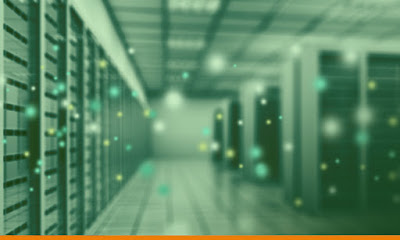The amount of global data being stored, processed and managed continues to grow exponentially each day. In turn, artificial intelligence is playing a pivotal role in helping data center service providers capture, process and analyze this data at a faster and more powerful rate than ever before. From automated monitoring systems to advanced energy savings, here’s how artificial intelligence is improving the operations and efficiency of global data centers.
What Artificial Intelligence Means for Data Center Service Providers
Artificial intelligence isn’t a new concept, and tools like face detection and voice recognition already play a major role in our daily lives. Strava, Inc. Staff Engineer Drew Robb adds that object identification, classification, and other forms of geographic and identity detection are leading AI uses in the enterprise market.
All of these applications place an increased strain on data centers because they require increased data storage and processing in order to run. Managing this immense increase in data requires that the data center industry scale, adapt, and acquire more computing power. Artificial intelligence enables the
data center service provider to meet such demands in a variety of ways, including operational automation, elastic computing power and predictive maintenance.
Improving Data Center Efficiency
Increased data processing requires that data centers keep hardware cool. With more data to process and hardware working harder, however, this drives up energy costs and increases the overall resource footprint of data centers.
Fortunately, machine learning is playing a vital role in helping companies understand their data center energy consumption. As explained in Datacenter Dynamics, artificial intelligence is being used to analyze temperature set points, evaluate cooling equipment and test flow rates. The use of AI-powered smart sensors can receive data from numerous sources and relay that information as environmental, electrical and mechanical insights. In addition to detecting sources of energy inefficiencies,
machine learning can also be automated to make informed decisions that reduce data center energy consumption and cut costs.
Software solutions business manager Stefano D’Agostino adds that, “innovative startups are using intelligent machines with self-learning algorithms to optimize the allocation of the IT load itself so that optimal cooling can be achieved.” The benefits of such technology is already being realized, and statistics from The Data Center Science Center show that advancements in UPS efficiency and cooling energy losses have helped ordinary data centers cut physical infrastructure costs by 80% over the last decade.
This shows that, even though artificial intelligence technology is partly responsible for an increase in data center processing, it can also be used to mitigate its own increases in energy consumption.
Strengthening Data Center Security
In addition to improving energy efficiency, AI can also improve security of a data center. New York businesses rely on Telehouse because we’re committed to proactively managing customer data and reducing security risks wherever possible. We’re also tuned in to the latest advancements in AI security applications, which can screen and analyze data for security threats at a more thorough and rapid rate. AI can also help assess normal and abnormal patterns, detect malware and spam, identify weak areas and strengthen protection from potential threats.
Detecting and Reducing Downtime
Another way that artificial intelligence can influence the modern data center service provider is through improved outage monitoring. In fact, AI monitors have the ability to predict and detect data outages before they even occur. They also have the ability to track and detect server performance, disk utilization, and network congestions.
Today, artificial intelligence offers advanced predictive analytics services that make it easier and more reliable to monitor power levels and potential trouble areas.
Click here to visit original source....
Contact Details:
Telehouse America
7 Teleport Drive,
Staten Island,
New York, USA 10311
Phone No: 718–355–2500
Email: gregory.grant@telehouse.com
















